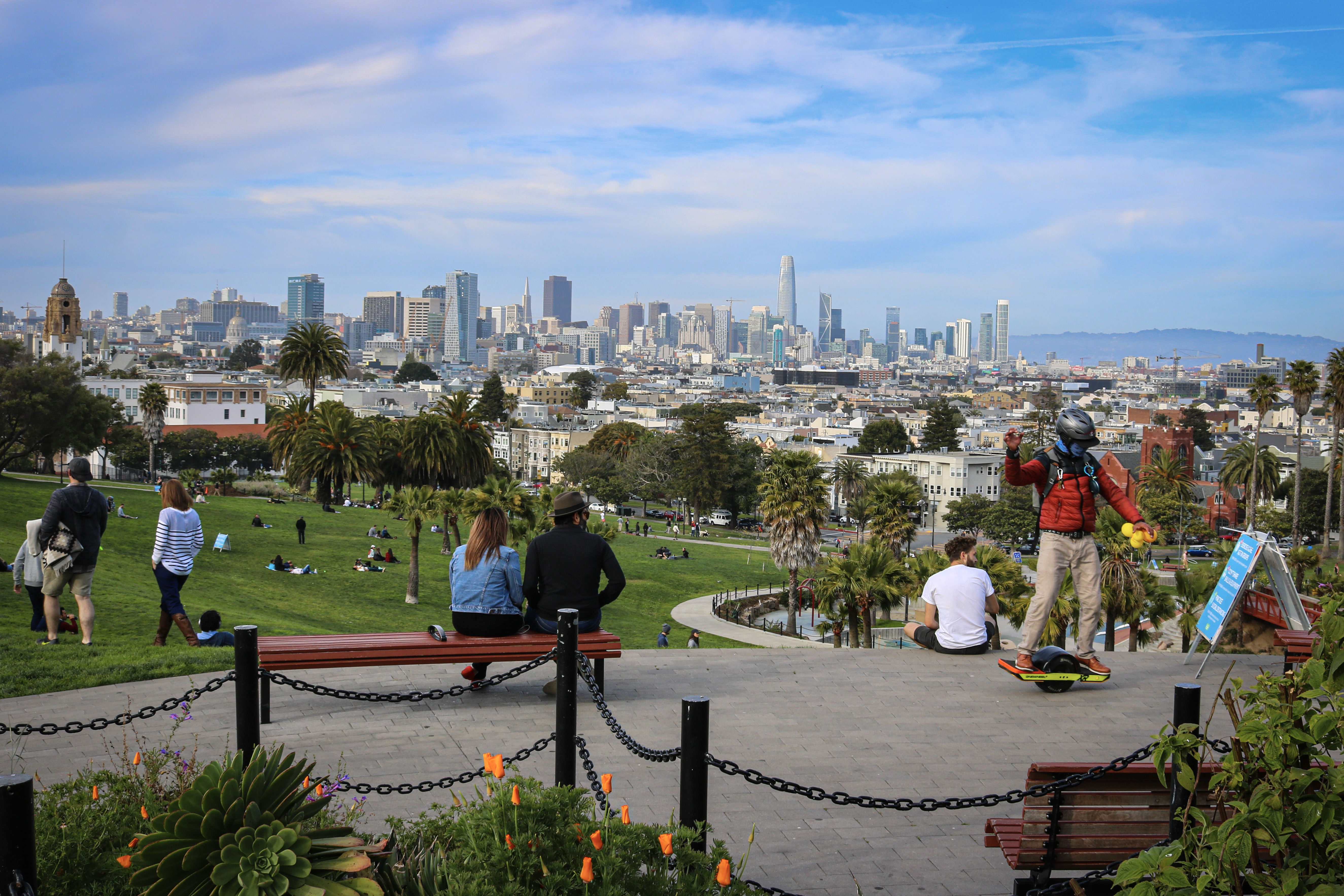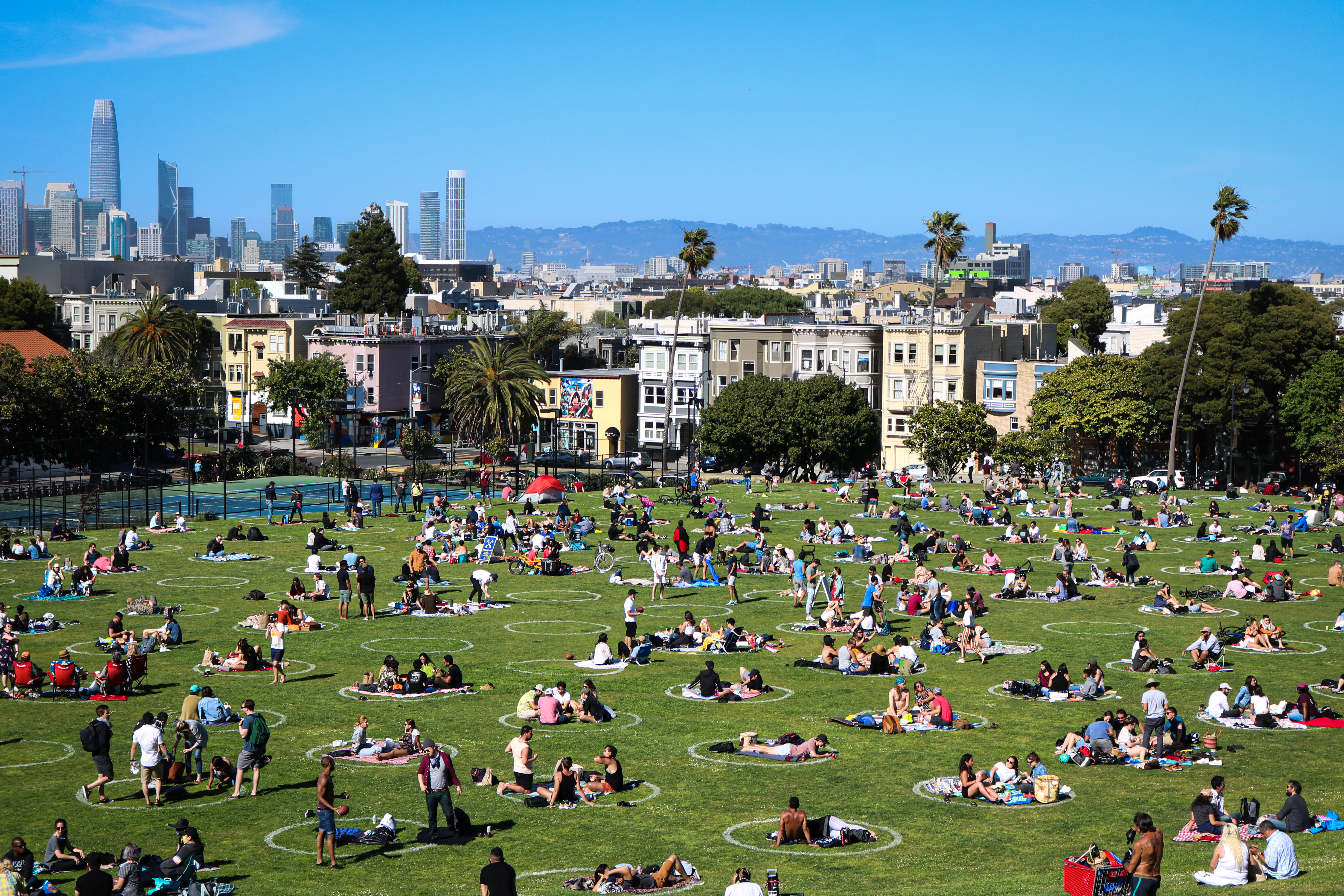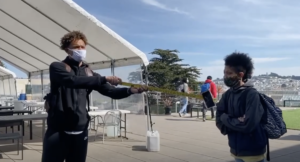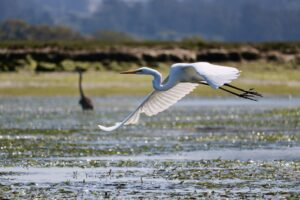
Photo by Gabe Castro-Root
It’s almost always sunny at Dolores Park.
Situated on Dolores and 18th streets between Noe Valley, the Castro and the Mission, the sloping grass rectangle dotted with palm trees feels festive at all times of the day.
The park has just about everything imaginable within walking distance — catch a movie at the Castro theater (post-pandemic), pick up a burrito at one of the dozens of great spots in the Mission, or a baguette at the Noe Valley Bakery, and dig in with friends while enjoying the park’s oddly warm microclimate and panoramic downtown views.
The park often hosts some raucous revelers late into the night, but perhaps its greatest claim to nighttime fame is the lights that illuminate the tennis courts, which, unlike most courts in the city, stay open after dark. In true San Francisco fashion, the courts are invariably occupied until their 10 p.m. closing time.

Photo by Gabe Castro-Root
Two blocks away is Dolores Park’s namesake, Mission Dolores, San Francisco’s oldest building. The mission opened in 1791 and was constructed with Native American labor, according to the National Parks Service. (The original mission was founded on June 29, 1776, just five days before the signing of the Declaration of Independence, but was rebuilt at the current location a few years later.) The mission’s cemetery holds several notable figures of California’s history, including the first Governor of the state under Mexican rule, Don Luis Antonio Arguello, who served in the mid-1820s.
The park itself has played host to a range of crowds over the centuries. It was a Jewish burial ground from the 1860s until 1904, when the cemetery was relocated to Colma. Two years later, it became a campsite for those left homeless by the 1906 earthquake. It was landscaped in 1910 and remained mostly unchanged until 2012, when it was partially closed and completely renovated. It reopened in 2016.
Last summer, Dolores Park was also the site of one of the biggest Black Lives Matter protests in the Bay Area, organized by students at Mission High School, which sits across the street.
Throughout the pandemic, the park has been a place where semi-normal life has gone on, sometimes COVID-safe, sometimes not. Friday and Saturday evenings regularly draw large crowds of music-playing, football-throwing young people, and the social distancing circles spray-painted on the grass are never far from full.
While the pandemic has taken a heavy toll on the businesses nearby, Dolores Park is as lively as ever. It’s a cross section of everything that makes San Francisco San Francisco — lounging teenagers, millennial tech workers, dozens of dogs, drug dealers, men in thongs and the perpetual haze of marijuana. There’s no better place to spend an afternoon.






